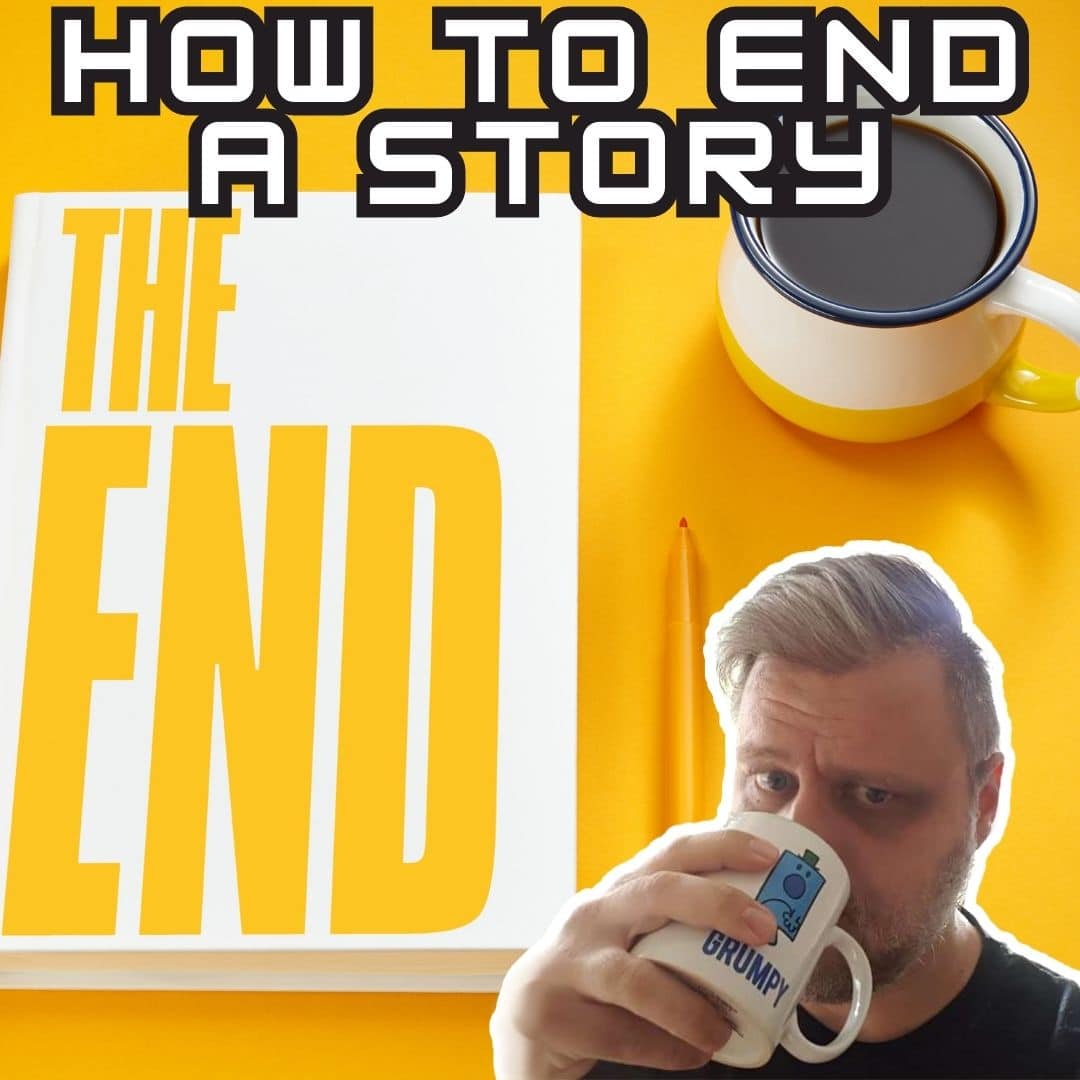No matter what type of story you are writing, it’s important to think carefully about how you will end it. A great ending can leave a lasting impression on your readers and make them remember the story for years to come. In this guide, we’ll look at some tips on how to end a story well, along with examples of successful endings that you can use.
As you may know, my preferred way of writing a novel or other story is to plan it out first. Sometimes I start with the end, sometimes elsewhere, but I make sure to finish the plan before I start writing – that way, I know where I’m heading.
Of course, the story sometimes takes on a life of its own, but at least I started with good intentions! Anyway, here we go!
How to End a Story Well
When you’re finishing your story, there are a few key principles you should follow. Here are some tips for crafting the perfect ending:
- Make sure it’s memorable – Whether it’s a poignant moment of realization or an epic battle, make sure your ending is something that will stay with readers and leave them wanting more.
- Tie up the loose ends – Make sure to tie up any plot points or questions that arose during the story. If your readers finish reading with unanswered questions, they can feel cheated and disappointed.
- Keep it simple but satisfying – Don’t make things too complicated at the end. A meaningful and emotionally charged scene will suffice.
- Leave room for interpretation – Let your readers draw their own conclusions and make sure to provide enough ambiguity to spark meaningful discussions.
- Make it believable – Your story should have a resolution that makes sense based on the events leading up to it. Don’t be afraid to surprise your readers, but make sure that what happens in the end is believable.
Examples of How to End a Story
Now that you know the basics of how to craft an effective ending, let’s look at some examples of how to end a story well.
- The Hero’s Triumph: In this type of story, the hero comes out triumphant in the end and defeats whatever obstacle stood in his way. Think of books and movies like The Lord of the Rings or The Incredibles – these are classic examples of endings that leave readers feeling satisfied and inspired.
- A Happy Ending: This type of ending is more common in romance stories, but can also be used in other genres. In this type of ending, two characters come together in the end and everything works out for the best. Think of The Princess Bride or Beauty and the Beast – these are classic examples of happy endings that leave readers feeling fulfilled.
- A Bittersweet Ending: This type of ending is common in stories where the main character has gone through a lot to get to a certain point, but ultimately doesn’t achieve the desired outcome. Think of movies like The Shawshank Redemption or Atonement – these are classic examples of bittersweet endings that leave readers feeling hopeful but also sad.
- An Open Ending: This type of ending is more open-ended and leaves the reader to draw their own conclusions based on the facts presented in the story. Think of movies like The Sixth Sense or The Usual Suspects – these are classic examples of open endings that leave readers feeling intrigued and sometimes unsettled.
No matter which type of ending you choose, make sure it fits with the overall tone and theme of your story. You want to leave your reader with a feeling that is appropriate for the story you’ve created. If you’re going for an inspiring ending, make sure it doesn’t fall flat – try to avoid cliched endings that are used too often and don’t add anything new. Similarly, if you’re trying to evoke a certain emotion with your ending, think about how best to achieve this. Avoid being too predictable or formulaic, but still tie up your loose ends in a satisfactory way.
Another important consideration is the ending of your story’s arc. The arc is the trajectory of the plot – it starts off with an inciting incident and builds up to a climax before winding down to a resolution. Make sure that your ending draws all these elements together in an appropriate way – take a murder mystery as an example. Early on, someone is usually done away with, and the journey the reader goes on passes through many clues and red herrings. The resolution of the story tells you who did it, how they did it, why they did it, and why the red herrings don’t fit in with the true story.
Finally, be sure to give your story time to breathe before you bring it to a close. Don’t rush the ending – take your time and make sure that all the pieces fit together in an appropriate way. Giving yourself enough time will ensure that the reader’s experience is satisfying and complete.
Ending a story can often feel like an intimidating task, but if you keep these tips in mind you can make sure your story ends with a bang. Just remember to focus on the journey your reader has been on up until the end, and tie up all the loose ends appropriately.
Even if you have a sequel planned!
